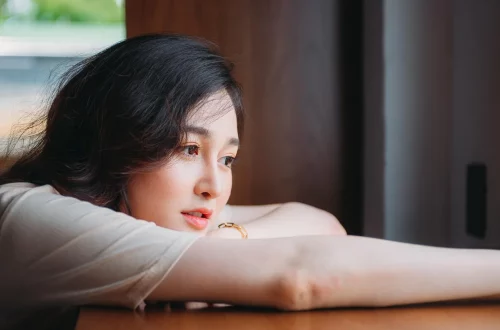
Jaimie Smiles Naked: Celebrating Art and Body Positivity
In a world increasingly obsessed with image and appearance, the celebration of individuality and self-expression has never been more important. The act of embracing one’s body, regardless of societal standards, is a powerful statement that resonates deeply with many. This notion of body positivity transcends mere aesthetics; it is interwoven with concepts of self-acceptance and artistic expression. Art has long served as a medium through which we explore and challenge our perceptions of beauty, identity, and self-worth.
The journey towards body positivity is not just a personal endeavor; it is a collective movement that encourages people to love themselves as they are. In this context, the work of artists who express their experiences and perspectives on body image can serve as a source of inspiration and empowerment. By portraying the human form in its myriad shapes and forms, these artists invite us to appreciate the beauty of diversity. This celebration of the body is not simply about nudity; it’s about vulnerability, strength, and the beauty of imperfection. As we delve deeper into this rich tapestry of artistry and self-acceptance, we uncover stories that challenge conventional norms and inspire others to embark on their own journeys toward self-love and authenticity.
The Role of Art in Body Positivity
Art has always been a powerful vehicle for self-expression and societal commentary. Throughout history, artists have utilized their craft to confront societal norms, challenge beauty standards, and provoke thought. In the context of body positivity, art plays a pivotal role in redefining how we perceive our bodies and those of others. By presenting diverse representations of the human form, artists create spaces for dialogue about acceptance and inclusivity.
Artistic representations of the human body can take many forms—paintings, sculptures, photography, and performances, to name a few. Each medium has its unique way of conveying messages about beauty and identity. For instance, contemporary photographers often capture raw, unfiltered images of individuals, showcasing the beauty in imperfections and the uniqueness of each body. This approach not only challenges the unrealistic ideals perpetuated by mainstream media but also encourages viewers to reflect on their own perceptions of beauty.
Moreover, artists who embrace their own vulnerabilities in their work often resonate deeply with audiences. When an artist shares their struggles with body image, it creates a sense of connection and understanding. This authenticity fosters an environment where individuals feel safe to express their own insecurities and triumphs. The act of creating art becomes a therapeutic process where both the artist and the observer can engage in a dialogue about self-acceptance and love.
In addition to individual expressions of body positivity, art institutions and galleries have begun to curate exhibitions that focus on body diversity. These exhibitions not only showcase the works of artists who challenge conventional beauty standards but also highlight the stories and experiences behind the art. By bringing visibility to marginalized bodies and experiences, these exhibitions play a crucial role in normalizing diversity and fostering a culture of acceptance.
Ultimately, art serves as a mirror reflecting society’s evolving relationship with body image. As the body positivity movement continues to grow, artists will undoubtedly play an essential role in shaping the narrative surrounding beauty, identity, and self-acceptance.
Embracing Vulnerability in Artistic Expression
Vulnerability is often seen as a weakness in society, yet it is a powerful tool for connection and authenticity. In the realm of art, embracing vulnerability allows artists to delve into their personal experiences and share their stories with the world. For many artists, the act of creating is an exploration of their own insecurities and challenges, particularly regarding body image.
When artists expose their vulnerabilities—whether through self-portraiture, performance art, or other forms—they invite viewers to engage with their work on a deeper level. This connection can lead to a greater understanding of the complexities surrounding body image and the myriad factors that influence our perceptions of ourselves and others.
Consider the example of performance artists who use their bodies as a canvas to express their experiences with body image, self-acceptance, and societal expectations. Through movement, they convey emotions that words often fail to capture. This form of expression can be incredibly powerful, as it transcends language barriers and speaks directly to the human experience.
Moreover, artists who tackle themes of vulnerability often inspire others to share their own stories. When individuals see someone bravely confronting their insecurities, it encourages them to do the same. This ripple effect can lead to a broader cultural shift toward acceptance and love for diverse bodies. By fostering an environment that celebrates vulnerability, we can create a supportive community that uplifts one another.
Additionally, embracing vulnerability in art can also serve as a critique of societal norms. Artists who challenge the status quo through their work force audiences to confront uncomfortable truths about beauty standards and self-worth. This critical perspective is essential for fostering conversations about body positivity and inclusivity in society.
In conclusion, vulnerability is a cornerstone of artistic expression that can lead to profound connections and insights. By embracing their own insecurities, artists create spaces for dialogue and understanding, ultimately contributing to a culture of body positivity and acceptance.
Redefining Beauty Standards
The concept of beauty has been historically shaped by cultural, social, and economic factors. However, in recent years, there has been a significant movement toward redefining beauty standards, largely fueled by the body positivity movement. This shift encourages individuals to embrace their unique qualities and reject the narrow definitions of beauty that have long prevailed.
Artists play a crucial role in this redefinition by portraying diverse representations of beauty in their work. By showcasing bodies of all shapes, sizes, colors, and abilities, they challenge the conventional ideals that often dominate mainstream media. This representation is vital in promoting inclusivity and encouraging individuals to appreciate their bodies as they are.
One of the most striking aspects of this movement is the celebration of “imperfections.” Artists often highlight features that have traditionally been deemed undesirable, such as scars, stretch marks, or unconventional body shapes. By bringing these attributes to the forefront, they normalize the idea that beauty is not synonymous with flawlessness. This shift in perspective empowers individuals to embrace their bodies, fostering a sense of pride and self-acceptance.
Furthermore, redefining beauty standards is not limited to the visual arts. Literature, music, and film also contribute to this cultural shift. Storytellers who focus on narratives of self-acceptance and resilience encourage audiences to question the messages they receive about beauty. These stories resonate with individuals who have struggled with body image, providing validation and inspiration.
Social media has also played a significant role in the redefinition of beauty standards. Platforms like Instagram and TikTok have given rise to a diverse array of voices and perspectives that challenge traditional norms. Influencers and activists use these platforms to share their journeys of self-acceptance, creating communities that celebrate diversity and body positivity.
Ultimately, the redefinition of beauty standards is an ongoing process that requires collective effort. By supporting artists, storytellers, and advocates who challenge conventional ideals, we can contribute to a culture that celebrates diversity and encourages self-love.
Creating a Culture of Acceptance
Building a culture of acceptance is essential for fostering an environment where individuals feel empowered to embrace their bodies and express themselves freely. This culture is not built overnight; it requires the efforts of individuals, communities, and institutions alike.
Education plays a vital role in cultivating acceptance. By incorporating discussions about body image and diversity into educational curricula, we can equip future generations with the tools to appreciate themselves and others. Teaching children and young adults about the beauty of diversity fosters empathy and understanding, allowing them to challenge harmful stereotypes and embrace inclusivity.
In addition to education, community initiatives can significantly impact the culture of acceptance. Workshops, support groups, and art programs that focus on body positivity provide safe spaces for individuals to share their experiences and express themselves creatively. These initiatives empower participants to celebrate their bodies and build lasting connections with others who share similar struggles.
Moreover, media representation is crucial in shaping societal perceptions of beauty. By advocating for more diverse representation in film, television, and advertising, we can challenge the narrow ideals that have long been perpetuated. When individuals see themselves reflected in media, it reinforces the message that all bodies are worthy of celebration.
Social media platforms also wield significant influence in shaping cultural narratives. By promoting body-positive content and supporting creators who embrace diversity, users can contribute to a more inclusive online environment. This collective effort can help counteract the negative impact of unrealistic beauty standards often perpetuated by mainstream media.
In conclusion, creating a culture of acceptance is a multifaceted endeavor that requires collaboration and commitment. By prioritizing education, community initiatives, and diverse representation, we can foster an environment where individuals feel empowered to embrace their bodies and celebrate their uniqueness.
**Disclaimer:** This article is for informational purposes only and does not constitute medical advice. For any health-related concerns or questions, please consult a qualified healthcare professional.



